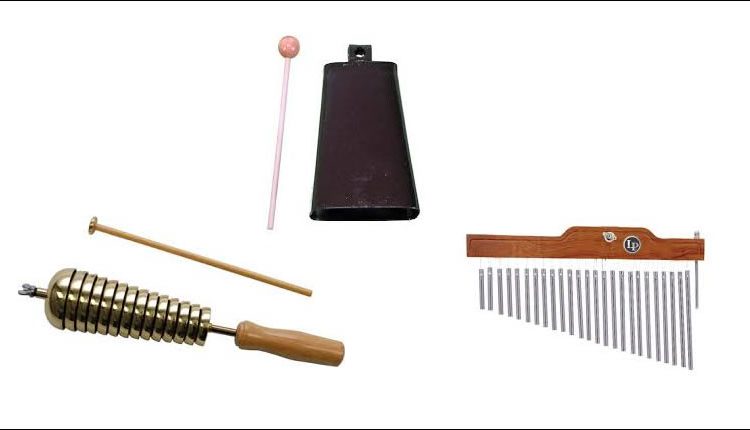Don’t Forget the Auxiliary! – Part 3
Don Sumwalt, Woodwind & Brasswind
This is Part 3 in a four part series examining the importance of proper auxiliary percussion in large ensemble performance. The instruments suggested are a basic inventory recommended for all band programs. Within the world of percussion instruments, this inventory can be augmented to accommodate a wide variety of works for band.
In this part of this series, we will take a look at another set of basic auxiliary instruments, that band director should have for their ensemble. The instruments we will look at now are: Finger Cymbals, Bar Chimes, Bell Tree, and Cowbell.
Finger Cymbals
Finger cymbals can be played in a variety of ways. The cymbals can be played by striking the cymbals together, or with a triangle beater or a hard bell mallet. For most band applications, thick finger cymbals work best due to their resonance, although thin pairs can be used on especially soft passages with satisfactory results. Finger cymbals by Zildjian, Sabian, Latin Percussion and Paiste are made from bronze and offer the most desired sound.
Bar Chimes
Also known as wind chimes or chime trees, these instruments first became popular in commercial styles of music. More recently, the bar chimes have moved into wide use in symphonic band music. Bar chimes come in different sizes, from 25 to 69 bars in single or double rows, which offer a different variety of sound. This instrument is played by moving the fingers or a small mallet across the metal bars to produce the sound. Bar chimes can usually be mounted to standard cymbal stands. Manufacturers such as Latin Percussion, Rhythm Tech, Meinl, and Universal Treeworks offer bar chimes which work well in large ensemble or small jazz band settings.
Bell Tree
Bell trees are a set of vertical brass bell, which are in a graduated set. The bell tree, or Chinese Bells, is played by moving a mallet either up or down the set of bells. The mallet is usually metal, such as a triangle beater or a brass bell mallet. Bell trees are available in a suspended stand or in a handheld version. Latin Percussion, Rhythm Tech, and Barclay offer a variety of bell trees.
Cowbell
One of the workhorses of the auxiliary percussion instruments, the cowbell comes in a wide variety of styles. Cowbells are usually held in the hand while playing, although they can be mounted on a stand. The best mallet used to play the cowbell is the butt end of a heavy drumstick. Rhythms Tech, Remo, Toca, Pearl, Meinl and Latin Percussion make a variety of cowbells.
Next Time: Part 4 – Maracas, Shakers, Cabasa, and Guiro


